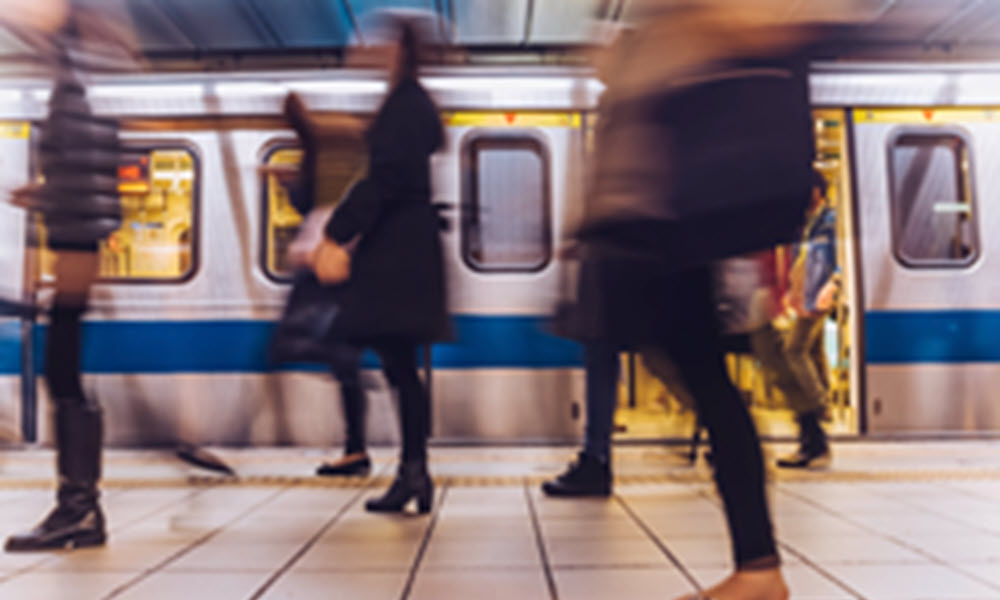Tomorrow’s transit will be less about mobility and more about seamless convenience. For passengers, the daily commute will present a multi-faceted experience full of lifestyle choices, powered by pervasive connectivity and the Internet of Things (IoT). As an agency, you win when you deliver a rich travel experience for customers, who are simultaneously informed, entertained, and enabled to do more with their day.
Ride-sharing’s success shows that passengers value travel on demand, cashless (meaning, easy) transactions, short waits, and the fastest travel times. Not to mention real-time information and communication.
The message is clear: riders want a better customer experience. Our industry knows this -98% of 45 US transit agencies recently surveyed by IPSOS/Transdev planned to improve their passenger experience in the coming years. So how can you do so when innovations such as leveraging social media and mobile, performing deeper analytics, and migrating to the cloud (collectively called SMAC) are now table stakes?
To get ahead, you need to embrace the possibilities that an alphabet soup of new technologies brings. The so-called DARQ technologies - Artificial Intelligence (AI), Augmented Reality (AR), Autonomous Vehicles (AV), and Quantum Computing (QC) - will offer passengers the greatest value, heightening public transit’s appeal.
Accenture’s recently published Transportation Technology Vision 2019 identifies how to leverage DARQ to take advantage of four opportunities transit companies should exploit to meet the growing expectations of customers. Let’s look closely at each one.
MaaS: The Next Wave of Competitive Advantage
Zoe is watching a concert downtown tomorrow night. A week ago, when she booked her concert ticket, the app asked if she was taking the bus, train or car to the stadium. Zoe chose train and the app gave her options on how to get to the station and from the station to the stadium. Zoe booked an AV to take her to the station and a dockless bike for the station-to-stadium trip.
The AV arrives on time on the night of the concert, sending a message to her phone that it’s now outside her door and to “watch out for the pothole” it picked up on its vehicle sensors. At the station, the interactive screen welcomes Zoe by name, as she passes through the entrance, and tells her how to get to Gate 3 where her train is arriving in 10 minutes.
Mobility as a Service presents a huge opportunity to heighten the customer experience. Integrating transit modes to deliver a customized, end-to-end journey for a passenger requires technological capabilities that make travel faster and easier. Monthly transportation subscriptions, pay-as-you-go mobility, and circulator services by transit agencies are some current examples.
When combined with real-time delivery, MaaS promotes cost-effective, convenient mobility that offers choice and flexibility (and maybe even cleaner travel), a win-win-win for customers. Eighty-five percent of transportation executives surveyed by Accenture believe that personalization combined with real-time delivery will usher in the next wave of competitive advantage.
New technologies greatly enhance MaaS’ appeal for travelers. Imagine an AI mobility algorithm that can calculate the fastest route for a passenger or the most appropriate travel option while accounting for traffic, weather disturbances, scheduled maintenance, or disruptions along the way. Travelers can be provided with precise arrival and departure times for each mode within the ecosystem.
AI takes data from traffic cameras, vehicle sensors, and GPS to analyze and understand traffic patterns to devise the most efficient routes. Deep Learning, meanwhile, tracks and models pedestrian motion, and estimates pose to gauge pedestrian intent, especially for self-driving vehicles.
Augmented reality models can help trip planners visualize alternative routes or guide passengers around a station virtually before they arrive. Autonomous vehicles provide first- and last-mile capabilities and can help the elderly and differently-abled get around easily.
(For paratransit, AI and AV harmonize well to enhance passenger mobility – think an AV that knows the passenger’s details arriving to pick up a customer, equipped with lasers, camera, and radar; it is able to identify an appropriate boarding spot free from obstacles on the curb, and sends a message to the rider’s smartphone to indicate it is waiting outside).
Seamless Convenience: Making Passengers Fall in Love with Transit
Due to a passenger incident, Zoe’s train will be 15 minutes late, a message on her phone informs her a bit later. Apologizing for the delay, her mobility app offers her a choice of a seat upgrade at the concert or coffee at a cafe. Zoe chooses a latte, walks to the café, and finds her drink waiting for her at the mobile pick-up counter.
When the train arrives, Zoe passes through a face scanner by the entrance gate and boards the train, securing her seat on the mobile app. Comfortably settled, she asks the app to put together a playlist of the band’s songs, just to get her in the mood. She also gets a virtual tour of the stadium to know exactly where to go when she gets there.
Eighty-two percent of respondents in Accenture’s survey believe that digital demographics will help them identify new market opportunities for unmet customer needs. Already, 70% of transportation executives report that digital demographics have expanded the ways agencies can deliver products and services.
Think how you can provide complementary services throughout the passenger journey, delighting the customer with entertainment choices and engaging experiences. Technologies will enable better customer analytics to enrich loyalty and rewards programs, delivering personalized services such as recommendations for destinations, and tailored music or podcast playlists. Passengers breeze through the train doors, which scan a microchip embedded in their hand, and find a vacant seat through intelligent navigation. Discounts can be offered for businesses along the route, creating unheard-of income streams for transit. The goal is to delight customers so they will return again and again.
Some present examples are already quite impressive – in China, the ubiquitous messaging app WeChat features mobile ticketing for rail trips and passengers can order food as well for their ride; in Germany, the Deutsche Bahn rail company has an AI-based chatbot fielding customer queries.
Enhanced Safety Is Part of the Travel Experience
Security provides another domain for improved customer experience. Enhancing passenger safety and security, not only physically but concerning personal data as well, increases customer trust and loyalty. Security ranks high in agency priorities – 85% of executives surveyed agree that organizations need to rethink their approach to security, extending it to the whole transportation ecosystem.
Video analytics, computer vision, and AI can be used to detect aggressive or suspicious behavior on-board or at stations and terminals, enabling transport authorities to act quickly. In Singapore, for example, an ongoing public safety pilot combines video feeds, social media data, GPS coordinates, and IoT sensor data to predict crowd behaviors. VR, meanwhile, can create immersive training environments for transit staff to strengthen their situational awareness.
However, increased surveillance and data capture come double-edged. Cyberattacks can compromise public safety and passenger personal data. Accenture reports that only 28% of leaders surveyed know their ecosystem partners’ security posture. Going forward, you’ll need to make data protection a top priority to build rider trust and gain their loyalty, in part to access vital customer information.
Keep Asset Management Top of Mind
To keep up with rising customer expectations, your assets should be running optimally. AI, big data analytics, machine learning, and the Industrial Internet of Things (IIoT) can resolve asset issues before they happen. Accenture cites Metro Transit – St. Louis’s partnership with Trapeze as a great example - the agency adopted a predictive, condition-based replacement maintenance model that saved $2.4 million a year.
Meanwhile, with extended reality, maintenance crews wearing VR goggles can repair assets in the field with real-time instructions. And when quantum computing matures, it will greatly increase your transit systems’ capacity to process sensor data.
The Future Is DARQ – I Gotta Wear Shades
At the downtown station, Zoe gets directions on her phone to her bike. On the way to the stadium, the app’s voice assistant lists promos of stores she passes. She tells herself to get a T-shirt on the way back. She arrives at the stadium, where another interactive screen welcomes her by name and wishes her a wonderful concert.
This “post-digital” environment presents opportunities for you to provide the best end-to-end experience for your passengers. Social, mobile, analytics, and cloud are basic competencies. Artificial intelligence, extended reality, and autonomous vehicles are the new game-changers.
According to Accenture, 94% of transportation executives surveyed already experiment with distributed ledger (e.g. blockchain), AI, or extended reality solutions. That’s a fantastic start.
Your challenge now is to keep up with the latest in these technologies. Continuous learning is key. And where better for a deep dive into transit tech than at ThinkTransit 2020, slated for April 19-22 in Tucson, Arizona? With engaging keynotes that explore emerging technologies and hands-on training on our current technologies, Trapeze’s annual conference tackles the issues confronting transit today and tomorrow.
New technologies make transit such an exciting industry to be in. I can’t wait to see what amazing experiences passengers will enjoy when they take the bus or train in a year or two. Maybe even earlier. Stay tuned.
 Bus
Bus Rail
Rail Paratransit
Paratransit


